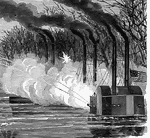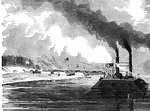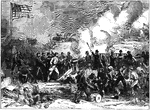Clipart tagged: ‘Lexington’

Clay's Monument at Lexington, KY
Known as "The Great Compromiser" and "The Great Pacifier" for his ability to bring others to agreement,…

Battleground at Concord
"Battle ground at Concord. This view, looking southeast, is from the road leading to the village, by…

Bombardment of Fort Henry
"Bombardment of Fort Henry, Tennessee River, Tenn., by the Mississippi Flotilla, Flag Officer Foote,…

Bombardment of Fort Henry
"Bombardment of Fort Henry, Tennessee River, Tenn., by the Mississippi Flotilla, Flag Officer Foote,…

Bombardment of Fort Henry
"Bombardment of Fort Henry, Tennessee River, Tenn., by the Mississippi Flotilla, Flag Officer Foote,…

Bombardment of Fort Henry
"Bombardment of Fort Henry, Tennessee River, Tenn., by the Mississippi Flotilla, Flag Officer Foote,…
